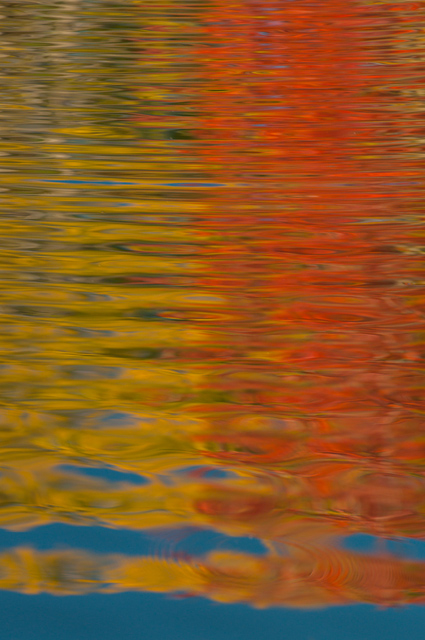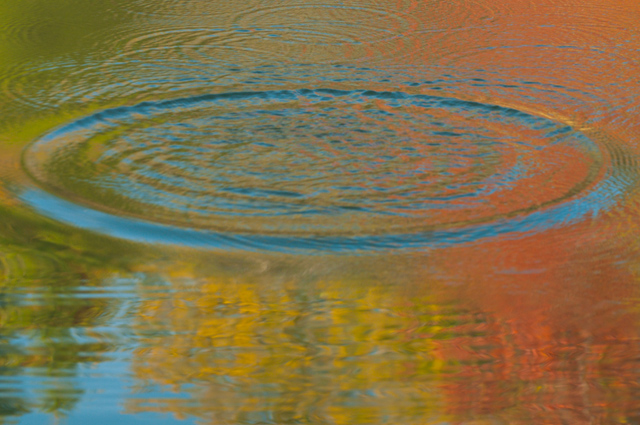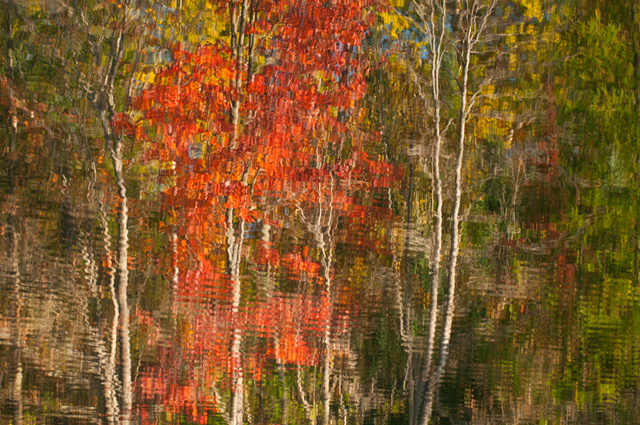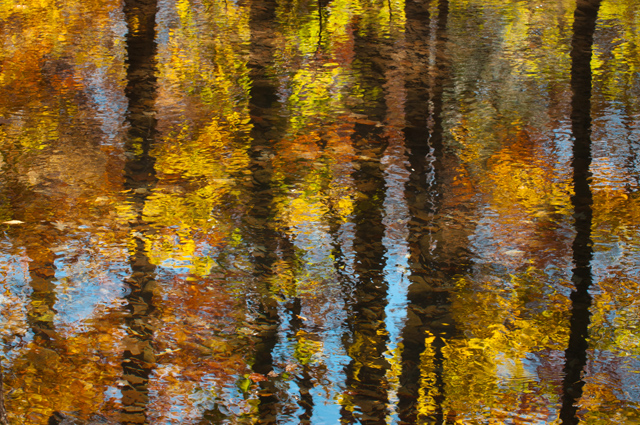Fun with Fall Reflections
October 29, 2012 by Admin
 Fall has arrived and naturally we think of photographing the brilliant display of color as the leaves turn from gold to crimson then bronze. There’s no doubt these make stunning photographs, but next time you venture out to capture the season’s color, put on your creativity cap and instead of looking up to the leaves, look down to find colorful reflections in the water. Close to town look to the still areas of the Potomac, the Tidal Basin, the C & O Canal, Rock Creek and many of our area’s smaller lakes. If you’re heading out to the country, look to the rivers, creeks and streams.
Fall has arrived and naturally we think of photographing the brilliant display of color as the leaves turn from gold to crimson then bronze. There’s no doubt these make stunning photographs, but next time you venture out to capture the season’s color, put on your creativity cap and instead of looking up to the leaves, look down to find colorful reflections in the water. Close to town look to the still areas of the Potomac, the Tidal Basin, the C & O Canal, Rock Creek and many of our area’s smaller lakes. If you’re heading out to the country, look to the rivers, creeks and streams.
Early mornings might reward the photographer with still, glass-like water, perfect for mirror reflections and a double dose of beautiful. Scenes that work well for this can include houses, farms, mountains, bridges and more, all being perfectly reflected as a twin.  Work quickly as the glass-like water changes rapidly and the mirror effect is lost to ripples.
Work quickly as the glass-like water changes rapidly and the mirror effect is lost to ripples.
When there’s a breeze causing ripples or the water is flowing, get creative and capture some abstract looking shots. Images can be made that look painterly and are difficult to tell they’re actually photographs. Using your camera’s manual exposure settings and selecting a slow shutter speed (1/10 of a second or less) the reflection may appear as patterned brush strokes and look almost impressionistic. Play around with this and have some fun – there is no right or wrong “look”.
Experiment with different exposure settings. You may want to start with the aperture setting of f11 to keep the depth-of- field and the apparent focus sharp throughout the frame. Depending on the light in a scene, this aperture setting may cause you to use a slow shutter speed which can result in blurring. I highly recommend using a tripod to give you the most flexibility in your exposure settings, allowing you to capture the image you want and not the one you have to accept because of hand-holding issues.
Composition and framing are important. Keep the scene clean and frame it without anything to distract the viewer’s eye from the main subject or reflection. Look for clean, simple shapes without clutter. Watch for dark shadows or over-exposed highlights to take away from the impact of a scene. Including land such as a river or stream bank can create a sense of scale and provide an anchor. At other times, framing without land makes a more dynamic photo.
Capture the same scene from different angles. Shoot from above, low to the ground, horizontally and vertically. Later you can choose which makes the most powerful composition but work the entire scene to make sure you leave with solid and usable images.
 As with any landscape photography, the quality and warmth of light is best in the early morning and late afternoon when the sun is lower in the sky and there is less contrast in a scene. If you are shooting a shaded stream, you may need to visit it at different times during the day to see when the light strikes the leaves to make the reflection you’re after.
As with any landscape photography, the quality and warmth of light is best in the early morning and late afternoon when the sun is lower in the sky and there is less contrast in a scene. If you are shooting a shaded stream, you may need to visit it at different times during the day to see when the light strikes the leaves to make the reflection you’re after.
Circular Polarizing filters will help to remove glare and will allow you to control the degree of reflection. Depending on how you turn the outer ring, you may be able to see into the water, reduce the reflection, or even eliminate it. This may, or may not be what you are trying to achieve. Look through your viewfinder and turn the polarizer to the effect you want.
Test which White Balance setting works best for what you’re shooting. Auto White Balance might be a good place to start but try Cloudy and Shade also as these will add warmth to the scene and enhance the rich color of the reflection.
 Point and Shoot camera users may want to try some of the Scene modes if there are no manual settings or you choose not to use them. Some cameras feature a FOLIAGE mode in the Scene Menu and this should work very well. You could also try AUTO or LANDSCAPE Mode. Look to your owner’s manual for a description of your camera’s Scene modes to see if one might work better than another for this purpose.
Point and Shoot camera users may want to try some of the Scene modes if there are no manual settings or you choose not to use them. Some cameras feature a FOLIAGE mode in the Scene Menu and this should work very well. You could also try AUTO or LANDSCAPE Mode. Look to your owner’s manual for a description of your camera’s Scene modes to see if one might work better than another for this purpose.
When you visit locations that offer great reflections, make a note and remember to return to them in the fall when the reflection will be more colorful.
